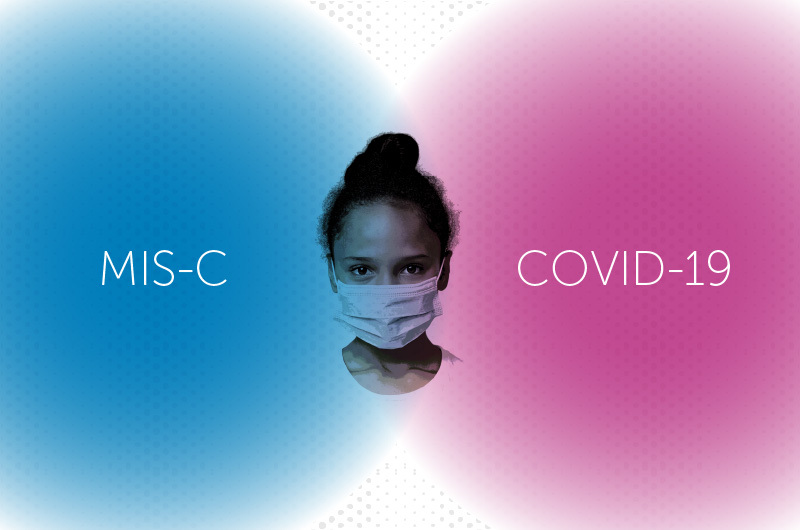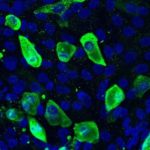Is it MIS-C or severe COVID-19? An update on multisystem inflammatory syndrome in children

In May 2020, multisystem inflammatory syndrome in children (MIS-C) was formally recognized as a post-infectious syndrome in children exposed to the SARS-CoV-2 coronavirus. In today’s JAMA, a study led by Boston Children’s Hospital refines the medical understanding of MIS-C. Its findings help distinguish this rare condition from severe, acute COVID-19 in children, with which it shares some features.
“This is the largest study we know of to describe severe COVID-19 versus MIS-C in kids,” says study leader Adrienne Randolph, MD, MSc, a critical care physician at Boston Children’s. “Our findings highlight that there’s a lot of overlap between the two conditions, but also point to differences that could affect treatment.”
The findings are the second report from the national Overcoming COVID-19 Public Health Surveillance Registry, led by Boston Children’s and funded by the Centers for Disease Control and Prevention (CDC). The first report, published in The New England Journal of Medicine last June, described findings in 186 children with MIS-C.
The new report reviews the cases of 539 patients under age 21 who met the CDC’s current definition of MIS-C and 577 patients diagnosed with severe, acute COVID-19. The children were hospitalized between March 15 and October 31, 2020, at 66 U.S. hospitals in 31 states.
Narrowing the definition of MIS-C
The current CDC criteria are meant to capture as many MIS-C cases as possible. They include age under 21, fever lasting at least 24 hours, laboratory evidence of inflammation, dysfunction of two or more organ systems, and either a positive result on COVID-19 testing (antigen, PCR, or antibody testing) or a known exposure to the virus.
“A key finding of our study was that this broad definition of MIS-C includes some patients who may be critically ill from acute COVID-19,” says Randolph.
MIS-C versus severe COVID-19: Demographic findings
Age-wise, children ages 6 to 12 were the most likely to have MIS-C as opposed to severe COVID-19. “This is not an age group that is usually at high risk for infection complications,” Randolph notes. “We need to understand this better.”
Black children were more likely than white children to have MIS-C rather than severe COVID-19, another finding the team wants to explore further. “Both Black and Hispanic populations are at high risk of getting infected with SARS-CoV-2,” Randolph says. “But once infected, Black children may be at higher risk of developing MIS-C.”
More children with MIS-C were previously healthy: 69 percent had no underlying conditions, whereas 62 percent of the COVID-19 group had at least one underlying condition.
MIS-C vs. COVID-19: Clinical findings
Other key findings that may help distinguish the two conditions:
- Lab tests showed more extreme inflammation in the MIS-C group.
- Both the MIS-C and the severe COVID-19 groups commonly presented with gastrointestinal symptoms like diarrhea and abdominal pain (90 vs. 58 percent, respectively).
- Mucocutaneous symptoms were more common with MIS-C (67 vs. 10 percent). These included rash, inflamed mucosal lining of the mouth, conjunctivitis, or redness or swelling of the hands or feet.
- Children with MIS-C were more likely than those with severe COVID-19 to be diagnosed with severe cardiovascular problems such as left ventricular dysfunction or coronary artery aneurysms (67 vs. 12 percent). While most of these problems resolved within 30 days, the investigators recommend continued monitoring. “Many children with acute COVID-19 did not have echocardiograms, so we can’t assume they were disease-free,” Randolph notes.
- Severe respiratory symptoms developed in 80 percent of both groups. However, only 24 percent of children with MIS-C had respiratory symptoms in the absence of cardiovascular involvement, compared with 71 percent of the acute COVID-19 group. The team speculates that some respiratory symptoms in MIS-C may result from cardiovascular effects of the virus.
Implications for care
This new, more detailed information may help consensus bodies like the CDC and World Health Organization refine their definitions and guidelines.
“Overall, our observations show that MIS-C and severe COVID-19 in children fall on a continuum, but there are some features that are more strongly associated with MIS-C,” says Randolph.
The findings could also help clinicians better distinguish between the two conditions and choose the most appropriate treatments, says Randolph. For example, IV immunoglobulin, which is in short supply, is commonly used in MIS-C but may not be appropriate for acute COVID-19. Conversely, while monoclonal antibodies and the antiviral drug remdesivir might be helpful in children with acute COVID-19, they’re not appropriate in MIS-C, in which there is no longer an active viral infection to combat.
Leora Feldstein, PhD, and Mark Tenforde, MD, of the CDC and Kevin Friedman, MD, of Boston Children’s Heart Center were co-first authors on the report. Jane Newburger MD, of the Heart Center and Manish Patel, MD, of the CDC were co-senior authors with Randolph.
More research on MIS-C and COVID-19
In addition to this study, Boston Children’s is leading and participating in many other multicenter studies to better understand both MIS-C and acute COVID-19:
- In the Heart Center, Newburger is co-leading the MUSIC study, investigating long-term heart complications of MIS-C in children.
- Sitaram Emani, MD, of the Heart Center and Riten Kumar, MD, MSc of the Dana-Farber/Boston Children’s Cancer and Blood Disorders Center each have studies of thrombotic events and predictors of blood clotting in children with SARS-CoV-2.
- In the Rheumatology Program, MaryBeth Son, MD, is reviewing treatments used for MIS-C and their effects on children’s outcomes.
- Tina Young Poussaint, MD, (neuroradiology) and Kerri LaRovere, MD, (neurology) will soon publish a report on neurologic complications of MIS-C and COVID-19.
- Janet Chou, MD, of immunology, and Catherine Brownstein, PhD, and Alan Beggs, PhD, of the Manton Center for Orphan Disease Research, are leading studies of immune responses and genetic factors that increase susceptibility to COVID-19 and MIS-C.
These studies are just a sampling. Boston Children’s is also conducting other clinical and laboratory studies of MIS-C, COVID-19, and SARS-CoV-2 and has an active working group of investigators around the hospital.
Learn more information for families on COVID-19.
Related Posts :
-

MIS-C: The tip of an iceberg? Looking at cardiac care for this rare syndrome
In the early days of the COVID-19 outbreak, it seemed that children were far less likely to develop serious problems ...
-

Treating inflammation in MIS-C: An evidence-based approach
Multisystem inflammatory syndrome in children (MIS-C) is a complex, post-COVID-19 spectrum of illness that has affected a small number of ...
-

How do patients with cystic fibrosis respond to COVID-19? An 'airway in a dish' may give answers
So far, based on clinical data, patients with cystic fibrosis (CF) don’t appear to be especially susceptible to COVID-19. ...
-

Why parents really need to talk to their children about the news
These are strange, anxiety-provoking times. That’s true no matter where one lives or where one sits on the political ...





